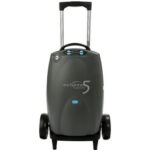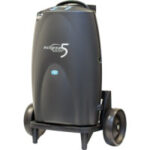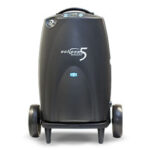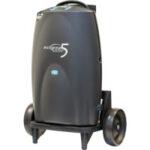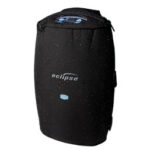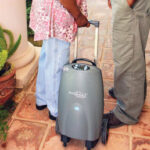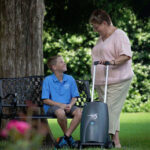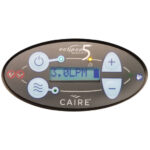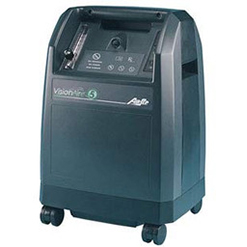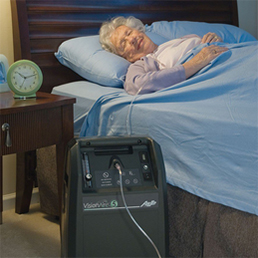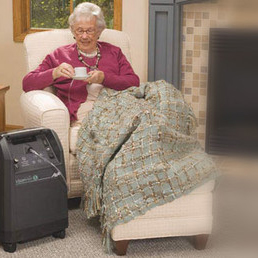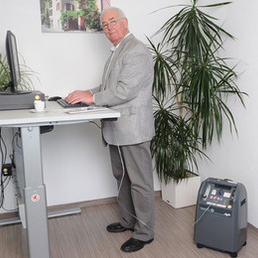Home Oxygen Concentrators (HOC)
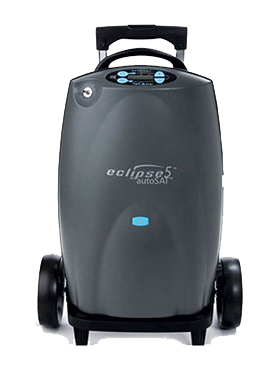
Eclipse 5
Hybrid Oxygen Concentrator
The Eclipse 5 is suitable for both stationary and portable use, combining portability with clinical efficiency to treat a wide variety of your needs, no matter the range of your activity levels – giving you the freedom to travel and enjoy life on the go. Suitable for use 24/7 use, this all-in-one oxygen therapy device can provide continuous flow from 0.5 to 3 LPM (Litres Per Minute) and pulse doses up to a setting of 9.
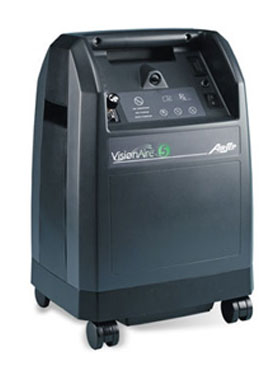
VisionAire 5
Stationary Oxygen Concentrator
The AirSep VisionAire 5 is a maintenance free, light, quiet and power efficient stationary oxygen concentrator. Simple to use and virtually maintenance-free, the AirSep VisionAire stationary oxygen concentrator is CAIRE’s tried and trusted workhorse in delivering long-term oxygen therapy to our patients. Lightweight, quiet and power efficient,
SUMMARY
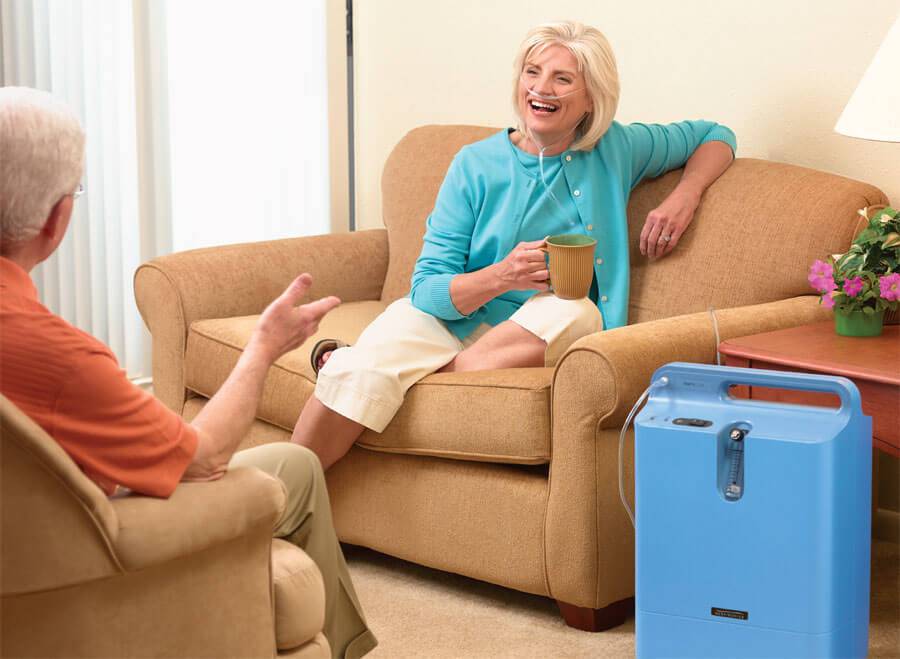
A Home Oxygen Concentrator (HOC) is a medical device that provides a high concentration of oxygen for individuals who require supplemental oxygen due to certain health conditions. It works by drawing in ambient air, compressing it, and then filtering out nitrogen and other gases to deliver
oxygen at concentrations up to 95%.
HOCs are designed for continuous use and can be plugged into standard electrical outlets, allowing them to operate 24/7. These devices often feature adjustable flow rates to cater to the specific needs of the user, and some models include built-in humidifiers for increased comfort.
When choosing a HOC, considerations include the device’s oxygen output, size and weight, noise level, power consumption, ease of use, and the support services provided by the vendor. At Oxygen West, our team is committed to helping you select the best home oxygen concentrator to suit your individual needs.
Detailed
A Home Oxygen Concentrator (HOC) is a medical device designed to deliver supplemental oxygen to individuals who require a higher concentration of oxygen than the ambient air provides. These devices are typically used by patients with chronic respiratory illnesses or those who require continuous oxygen therapy.
How Does a Home Oxygen Concentrator Work?
The mechanism of a home oxygen concentrator is based on the principle of Pressure Swing Adsorption (PSA). It operates as follows:
Air Intake
The HOC pulls in surrounding air, which is a mix of nitrogen, oxygen, and other gases. This air is compressed within the device, reducing its volume but increasing its pressure.
Filtration and Purification
The compressed air is then passed through a sieve bed filter, usually composed of a material called Zeolite, which adsorbs the nitrogen and some other gases, allowing oxygen to pass through. This process increases the concentration of oxygen from the usual 21% found in ambient air to up to 90-95%.
Oxygen Delivery
The purified, high-concentration oxygen is then delivered to the user via a nasal cannula or oxygen mask. The flow rate (measured in litres per minute) can be adjusted as per the patient’s medical prescription.
Key Features of
Home Oxygen Concentrators
Continuous Flow:
Unlike portable versions that often offer pulse dose delivery, HOCs provide continuous flow oxygen, which is necessary for patients who require constant, high flow oxygen, particularly during sleep.
Electrical Connection:
HOCs are designed to operate on standard electrical outlets, making them suitable for home use. They are capable of running 24/7 if necessary.
High Oxygen Concentration:
HOCs can provide oxygen concentrations of up to 90-95%, making them suitable for patients with varying degrees of oxygen dependence.
Adjustable Flow Rate:
Most HOCs have adjustable flow rates, ranging from 1 to 10 LPM or even higher, depending on the model.
Built-in Humidifier:
Some HOCs come with a built-in humidifier to moisten the oxygen, making it more comfortable for the patient to inhale, especially during long-term use.
Choosing the Right
Home Oxygen Concentrator
Selecting the right home oxygen concentrator involves considering the user’s specific oxygen requirements, lifestyle, and personal preferences. Here are key factors to take into account:
Oxygen Output:
Ensure the HOC can deliver the oxygen flow rate prescribed by the
healthcare provider.
Size and Weight:
While HOCs are stationary, they may still need to be moved around the house. A smaller, lighter unit might be more suitable for some individuals.
Noise Level:
Some HOCs operate quietly, which can be a significant factor, especially for night-time use.
Power Consumption:
HOCs are electrical devices that could be running continuously. It’s important to consider power efficiency.
Ease of Use:
The device should have straightforward, user-friendly controls.
Maintenance and Service:
Consider the ease of maintenance and the support provided by the vendor.
The Oxygen West team can provide in-depth consultation to assist in making the right choice for a home oxygen concentrator based on your unique requirements.
